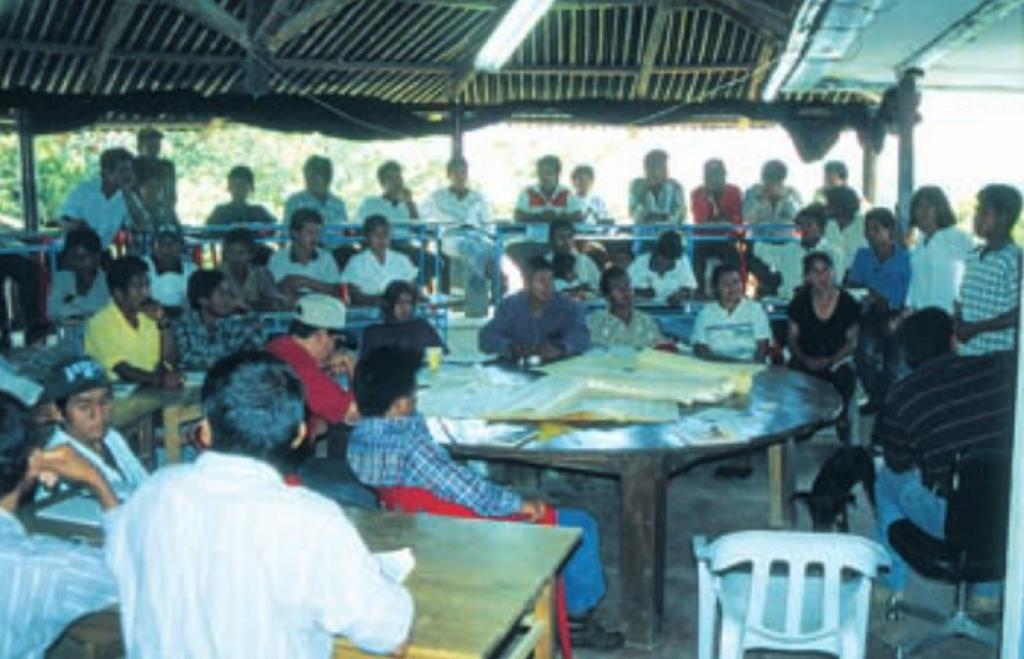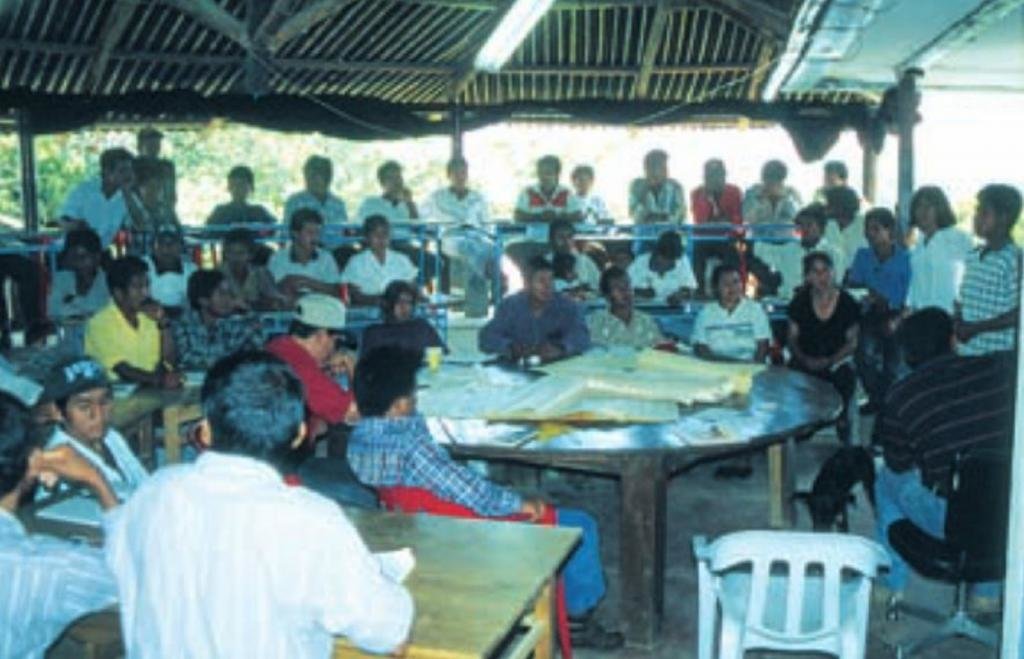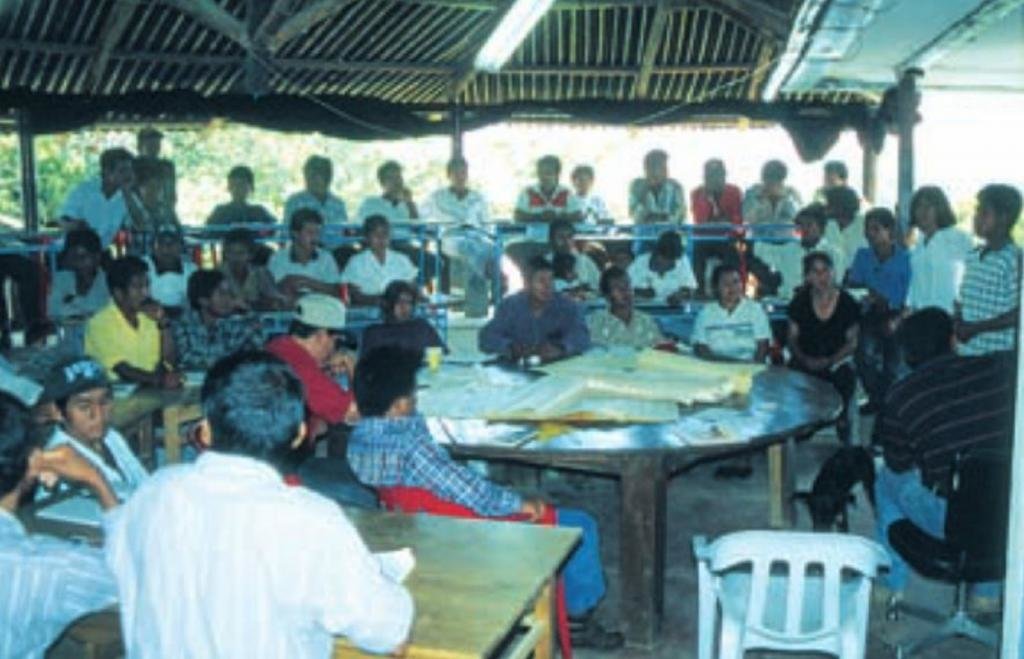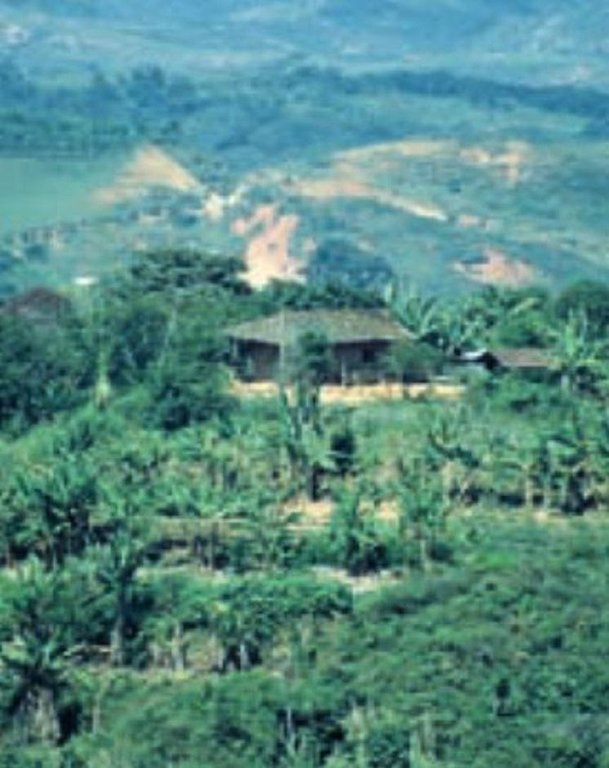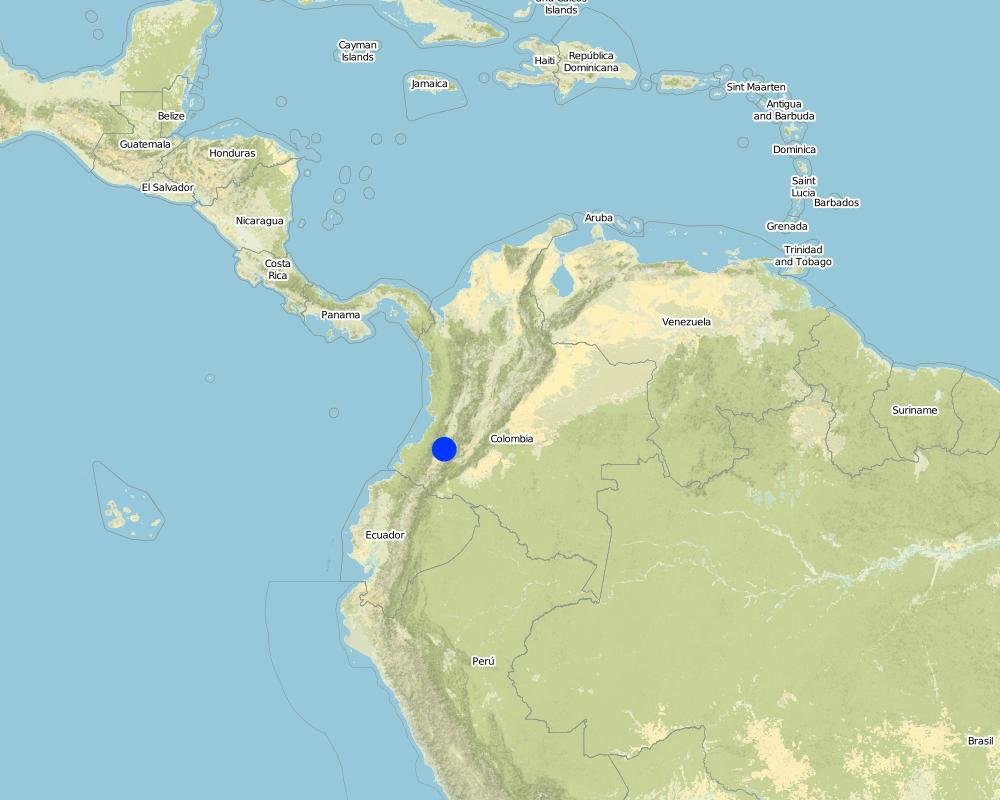Integrated rural community development [Colombia]
- Creation:
- Update:
- Compiler: Mathias Gurtner
- Editor: –
- Reviewers: David Streiff, Deborah Niggli
approaches_2393 - Colombia
View sections
Expand all Collapse all1. General information
1.2 Contact details of resource persons and institutions involved in the assessment and documentation of the Approach
Key resource person(s)
SLM specialist:
Cuervo Jairo
CISEC
Colombia
SLM specialist:
Caicedo Eduardo
092-3320067 / 3326779
alternativacomunitaria@telesat.com.co / ecaicedo@emcali.net.co
Calle 4B* 95-82 Barrio Melendez, Cali, Colombia
Colombia
SLM specialist:
Name of project which facilitated the documentation/ evaluation of the Approach (if relevant)
Book project: where the land is greener - Case Studies and Analysis of Soil and Water Conservation Initiatives Worldwide (where the land is greener)Name of the institution(s) which facilitated the documentation/ evaluation of the Approach (if relevant)
CDE Centre for Development and Environment (CDE Centre for Development and Environment) - Switzerland1.3 Conditions regarding the use of data documented through WOCAT
The compiler and key resource person(s) accept the conditions regarding the use of data documented through WOCAT:
Yes
1.4 Reference(s) to Questionnaire(s) on SLM Technologies
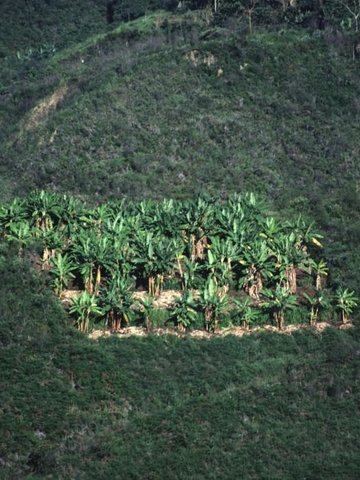
Intensive agroforestry system [Colombia]
A protective and productive high-input agroforestry system comprising multi-purpose ditches with bunds, live barriers of grass, contour ridging, annual crops and fruit trees.
- Compiler: Mathias Gurtner
2. Description of the SLM Approach
2.1 Short description of the Approach
Development of an impoverished indigenous reserve - incorporating alternative land use systems - through intensive training provided by a small NGO.
2.2 Detailed description of the Approach
Detailed description of the Approach:
Aims / objectives: The Foundation for Rural Community Development is a small NGO, working in a 5 km2 indigenous reserve - characterised by ecological and economic crises. In this area, the foundation has built up a Centre for Research and Community Services (CISEC - Centro de Investigacion y Servicios Comunitarios). CISEC operates an experimentation and training centre in the reserve, where large demonstration/production areas also exist. For 15 years CISEC has provided training to local promoters in the fields of sustainable land use and health care. Workshops are held, and a team of specialists guarantee continuous supervision and technical assistance for the land users. The specialists plan the approach and the development of the technology. Its design, and the precise implementation steps are clearly prescribed. The overall purpose of the approach is to raise the living standard of the marginalized indigenous people through alternative development opportunities. This is achieved by focussing on four principle areas: (1) Promoting an alternative land management system ensuring sustained and diversified production based on the principles of organic farming (see related technology: 'intensive agroforestry system'); (2) Improving basic health services, sanitation and promoting balanced nutrition; (3) Training, education and capacity building at three levels: (a) integration of sustainable land management as a topic in the local college - directed by CISEC; (b) basic training on technology implementation, ecological processes and accounting for all participants; (c) special workshops to train local promoters who continue to advise land users after the implementation stage through various means, including development of teaching materials, libraries, workshops, courses, farm visits, and demonstration sites. (4) Economical dimension: a new initiative within the programme focuses on marketing of organic products.
Role of stakeholders: Participating land users have to adhere to specific requirements and fulfil certain conditions. For example, the layout of the agroforestry system has to be done to plan, groups must be organised, and a schedule for implementation developed. Participatory identification of problems and needs takes place in community assemblies, and through individual talks between extensionists and land users. To facilitate the implementation and ensure the continuation of SWC practices, land user groups manage a revolving fund - based on the subsidised provision of manure ('manure-for-work') during the establishment phase of the technology.
2.3 Photos of the Approach
2.5 Country/ region/ locations where the Approach has been applied
Country:
Colombia
Region/ State/ Province:
Cuaca
Map
×2.6 Dates of initiation and termination of the Approach
Indicate year of initiation:
1990
2.7 Type of Approach
- project/ programme based
2.8 Main aims/ objectives of the Approach
1) achieve sustainable and efficient use of local resources, 2) improve the living standard of the indigenous population, 3) strengthen land users' organisations, 4) promote land rehabilitation and increase agricultural production, 5) promote environmental education through training of the community
The SLM Approach addressed the following problems: 1) high level of unsatisfied basic needs, 2) land degradation, 3) lack of technical and social infrastructure, 4) lack of support from outside
2.9 Conditions enabling or hindering implementation of the Technology/ Technologies applied under the Approach
social/ cultural/ religious norms and values
- hindering
Slow adoption of technologies at the beginning; reluctance and prejudice towards the white specialists from outside; difficulty in convincing local leaders.
Treatment through the SLM Approach: Discussions with interested land users, farmer-to-farmer interaction.
availability/ access to financial resources and services
- hindering
Lack of economic resources.
Treatment through the SLM Approach: Land users are provided with subsidised inputs during establishment phase.
legal framework (land tenure, land and water use rights)
- enabling
Lannd use rights are secure in the long term, thus no negative impact on approach or technology has been observed
- hindering
Land fragmentation leads to small-sized properties; access to water is limited.
Treatment through the SLM Approach: Construction of small private water tanks.
3. Participation and roles of stakeholders involved
3.1 Stakeholders involved in the Approach and their roles
- local land users/ local communities
There are moderate differences between the roles of men and women originating from machismo - the traditional relationships between (and roles of) men and women. While the difference currently is quite pronounced, the participation of women is increasing.
- SLM specialists/ agricultural advisers
- teachers/ school children/ students
- international organization
3.2 Involvement of local land users/ local communities in the different phases of the Approach
| Involvement of local land users/ local communities | Specify who was involved and describe activities | |
|---|---|---|
| initiation/ motivation | none | experimentation and demonstration of the technology on test areas, participatory identification of problems and needs in assemblies and individual discussions |
| planning | none | planning of the approach and technology implementation steps by specialists; for planning of workshops the land users are consulted regarding their needs |
| implementation | none | the land users implement the technology on their own, organised in groups, supported and assisted by the local promoters and by the CISEC specialists |
| monitoring/ evaluation | none | continued assistance and supervision by the specialists by means of farm visits, evaluations and reports (by CISEC and local promoters); during workshops observations made by land users are evaluated |
| Research | none | research activities take place basically on CISEC's plots, some experimentation is carried out on the land users' farms; there is integration of land users' ideas into the investigation process |
3.4 Decision-making on the selection of SLM Technology/ Technologies
Explain:
through experimentation and development of the technology by CISEC (including traditional elements) and consulting the needs of the land users.
Decisions on the method of implementing the SLM Technology were made by mainly by SLM specialists with consultation of land users. implementation of the technology according to directives of CISEC (regarding implementation steps and time-schedule). Modifications by land users only regarding the selection of crops.
4. Technical support, capacity building, and knowledge management
4.1 Capacity building/ training
Was training provided to land users/ other stakeholders?
Yes
Form of training:
- farmer-to-farmer
- demonstration areas
- courses
Subjects covered:
Training is carried out in agroforestry, livestock management, protection and sustainable use of forests, soils, watershed management, organic weed control (spraying organic liquids), basic accounting, and nutrition.
4.2 Advisory service
Do land users have access to an advisory service?
Yes
Specify whether advisory service is provided:
- on land users' fields
Describe/ comments:
Name of method used for advisory service: Workshops and farm visits are the main means of extension.; Key elements: training of local promoters who pick up extension activities in the community after the implementation phase has been completed, thus guaranteeing the long-term continuation of extension services
4.3 Institution strengthening (organizational development)
Have institutions been established or strengthened through the Approach?
- yes, greatly
Specify the level(s) at which institutions have been strengthened or established:
- local
4.4 Monitoring and evaluation
Is monitoring and evaluation part of the Approach?
Yes
Comments:
Bio-physical aspects were regular monitored by 0 through measurements; indicators: qualitative soil assessment
Technical aspects were regular monitored by 0 through observations; indicators: design modifications
Economic / production aspects were regular monitored by 0 through measurements; indicators: costs and benefits
Area treated aspects were ad hoc monitored by 0 through measurements; indicators: agroforestry plots
No. of land users involved aspects were regular monitored by 0 through measurements; indicators: participants
Management of Approach aspects were regular monitored by 0 through observations; indicators: distribution of limited project resources
There were several changes in the Approach as a result of monitoring and evaluation: these include schedule of technology implementation, incentives, the integration of animals into the production systems, training on specific topics that have been identified as important (maintenance of particular measures, keeping of accounts, etc).
4.5 Research
Was research part of the Approach?
Yes
Give further details and indicate who did the research:
Experimental investigation takes place on the demonstration plots of CISEC: there have been variety trials, and testing of SWC measures.
5. Financing and external material support
5.1 Annual budget for the SLM component of the Approach
If precise annual budget is not known, indicate range:
- > 1,000,000
Comments (e.g. main sources of funding/ major donors):
Approach costs were met by the following donors: international non-government (Helvetas (Switzerland)): 55.0%; national non-government (-): 5.0%; local community / land user(s) (-): 40.0%
5.2 Financial/ material support provided to land users
Did land users receive financial/ material support for implementing the Technology/ Technologies?
Yes
5.3 Subsidies for specific inputs (including labour)
- agricultural
| Specify which inputs were subsidised | To which extent | Specify subsidies |
|---|---|---|
| seeds | ||
| seedlings, manure, biocides | partly financed | Farmers pay for those inputs through working for Caritas |
- construction
| Specify which inputs were subsidised | To which extent | Specify subsidies |
|---|---|---|
| irrigation infrastructure | Farmers pay for those inputs through working for Caritas | |
If labour by land users was a substantial input, was it:
- food-for-work
Comments:
La mano de obra es voluntario. Se suministran insumos iniciales para el establecimiento de la tecnologÃa (Plántulas, abono), los campesinos
5.4 Credit
Was credit provided under the Approach for SLM activities?
No
6. Impact analysis and concluding statements
6.1 Impacts of the Approach
Did the Approach help land users to implement and maintain SLM Technologies?
- No
- Yes, little
- Yes, moderately
- Yes, greatly
Soil and water management has improved very much. Land users have implemented the agroforestry system, which combines different measures to control soil erosion, restore soil fertility, and improve soil water holding capacity.
Did other land users / projects adopt the Approach?
- No
- Yes, little
- Yes, moderately
- Yes, greatly
6.3 Sustainability of Approach activities
Can the land users sustain what has been implemented through the Approach (without external support)?
- yes
If yes, describe how:
Land users can continue activities initiated under the approach without further external support. The revolving fund helps them to access the necessary inputs, and technical assistance is available through the trained local promoters. SWC specialists from CISEC also follow up and monitor the implemented SWC practices during frequent farm visits.
6.4 Strengths/ advantages of the Approach
| Strengths/ advantages/ opportunities in the land user’s view |
|---|
| producción aumentado y continuo, productos sanos |
| recuperación de la fertilidad del suelo (How to sustain/ enhance this strength: suministración de abono) |
| capacitación |
| Strengths/ advantages/ opportunities in the compiler’s or other key resource person’s view |
|---|
| Strengthen self-sufficiency/independence of the community (How to sustain/ enhance this strength: Maintain activities) |
| Improve agricultural production through utilisation of local resources (How to sustain/ enhance this strength: Maintain activities) |
| Training of land users and of local promoters (human capacity building) (How to sustain/ enhance this strength: Maintain activities) |
| Sustained and/or increased agricultural production and marketing of 'healthy', organic products. |
| Involvement' of the land users by responding to their needs. |
6.5 Weaknesses/ disadvantages of the Approach and ways of overcoming them
| Weaknesses/ disadvantages/ risks in the land user’s view | How can they be overcome? |
|---|---|
| sistema abono por trabajo limitado al primer año, dspués difícil a conseguir el abono | |
| mucho mano de obra | |
| sistema abono por trabajo limitado al primer año, dspués difícil a conseguir el abono | |
| sistema abono por trabajo limitado al primer año, dspués difícil a conseguir el abono |
| Weaknesses/ disadvantages/ risks in the compiler’s or other key resource person’s view | How can they be overcome? |
|---|---|
| Very labour intensive technology design (but already overcome by provision of incentives and implementation in organised groups) | Emphasise production increase as an incentive. |
| The 'manure-for-work' system is limited to the first year for each participant; afterwards some land users find it difficult to get access to manure. | fortalezer capacitación |
| Lack of awareness raising and training in some important topics (eg green manuring etc) | Strengthen training. |
| The design and implementation processes of the technology are rather fixed and static | Allow more possibilities for modification by land users. |
| There are land users who participate only to receive manure for work (negative impact of incentives) | Put more emphasis on on-farm manure/ compost production. |
7. References and links
7.1 Methods/ sources of information
- field visits, field surveys
7.2 References to available publications
Title, author, year, ISBN:
Gurtner M (1999) Bodendegradierung und Bodenkonservierung in den Anden Kolumbiens - Eine Nachhaltigkeitsstudie
Available from where? Costs?
Science Faculty, University of Berne, Centre for Development and Environment
Links and modules
Expand all Collapse allLinks

Intensive agroforestry system [Colombia]
A protective and productive high-input agroforestry system comprising multi-purpose ditches with bunds, live barriers of grass, contour ridging, annual crops and fruit trees.
- Compiler: Mathias Gurtner
Modules
No modules


